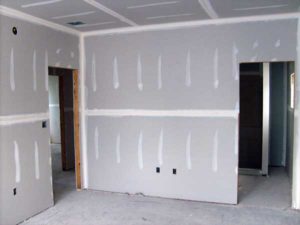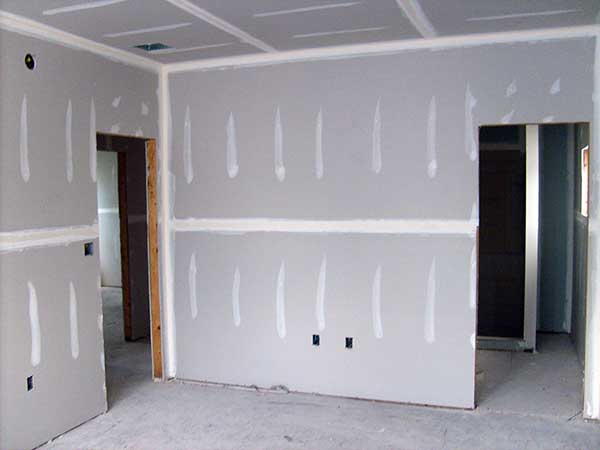Disclaimer: The information on our website is provided for general information purposes only. We make no representations or warranties of any kind, express or implied, about the completeness, accuracy, reliability, suitability or availability with respect to the website or the information contained on our website for any purpose. Any reliance on such information is therefore strictly at your own risk and we are not liable for any damages or losses arising out of or resulting from your reliance on any information contained on our website.
Drywall and ceiling tile installers hang wallboard and install ceiling tile inside buildings. Additionally, they typically work indoors and it can be physically demanding. Drywall and ceiling tile installers spend several hours bending, reaching, and standing, as well as lifting and maneuvering heavy, oversized wallboard. Watch a video to learn what a drywall and ceiling installer does:
How to Become a Drywall and Ceiling Tile Installer

Drywall and ceiling tile installers do not require a formal educational as most workers learn the trade on-the-job with more experienced workers. However, a knowledge of high school math and vocational technical courses are very helpful. On-the-job training can last up to 12 months whereas an apprenticeship is typically 3-4 years. For every year of an apprenticeship program you must gain at least 144 hours of related technical work and 2,000 hours of paid on-the-job training. During training the apprentice learns construction basics related to blueprint reading, building code requirements, mathematics, and first aide and safety practices.
Groups like the United Brotherhood of Carpenters and other contractor associations, sponsor apprenticeship programs requiring an aspirant to qualify by being 18 years of age or older, have a high school diploma or the equivalent, and have the physical ability to perform the work. Upon completion of this apprenticeship program, you are considered to be a journey worker and may work on your own.
Job Description of a Drywall and Ceiling Tile Installer
The duties of a drywall and ceiling tile installer typically include reading design plans in order to provide the minimal number of wallboard without causing unnecessary waste of materials. They must identify the exact locations of windows, electrical outlets, and plumbing and then cut the drywall or ceiling tile to fit the precise size needed.
These installers fasten tiles and panels with nails, screws, clips, or cement adhesive. The worker smooths any edges or rough spots, as well as any patches and trim. He or she covers joints between wallboards using sealing compound and tape and may use additional coats of sealing compound to create even surfaces. The drywall and ceiling tile installer also sands all joints and holes to create a seamless and smooth surface.
Drywall and Ceiling Installer Career Video Transcript
Beneath the surface of the rooms we inhabit are the materials that make up walls and ceilings. The exacting workers who construct these interior surfaces are drywall and ceiling tile installers and tapers. Drywall installers attach wallboard to create walls in new construction, or to remodel existing spaces. They measure and cut wallboard with exacting precision and hang the panels on wooden or metal framing. Tapers cover drywall seams with paper or fiberglass mesh tape so walls are ready for the final coating of plaster, paint, or wallpaper. They sand joints and holes as needed to create a seamless finish.
Ceiling tile installers create the framework for suspended ceilings, cut ceiling tiles to size, and insert them in the frames. These workers spend hours each day standing, bending, climbing up and down ladders, and lifting materials. Skilled with both manual and power tools, they may use mechanical lifts for ceiling work, or stand on stilts or scaffolds to reach the work surface. They wear protective masks, goggles, and gloves as needed. Most drywall and ceiling tile installers and tapers work for drywall contractors and learn their trade on-the-job. Knowledge of basic math is helpful, but there are no formal education requirements. In this field, when your back is up against the wall the job is done.
Article Citations
Bureau of Labor Statistics, U.S. Department of Labor, Occupational Outlook Handbook, Drywall and Ceiling Tile Installers, and Tapers.
National Center for O*NET Development. 47-2081.00. O*NET OnLine.

